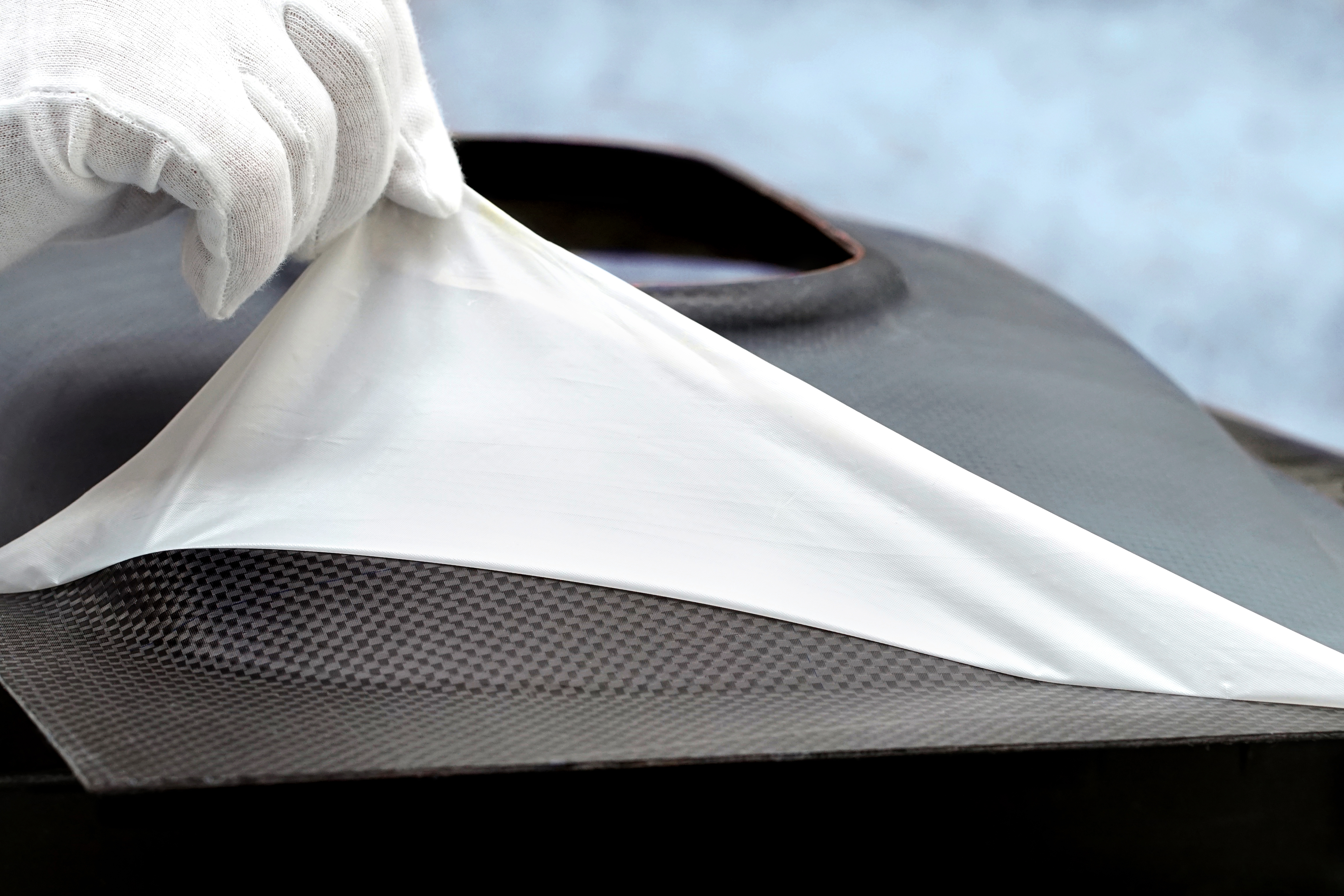The release agent free manufacture of large fiber reinforced plastic (FRP) structures, such as those used for aircraft and wind turbine construction, would mean that process steps such as applying release agents to molds and removing release agent residues from cured components could be avoided. To realize this goal, the experts in the Plasma Technology and Surfaces department and Automation and Production Technology department at the Fraunhofer Institute for Manufacturing Technology and Advanced Materials IFAM have developed PeelPlas® release film, a film suitable for deep-drawing processes and functionalized with plasma technology.
The special feature of the release film is its very thin (less than 0.3 microns), adherent, plasma-polymer layer that was developed by Fraunhofer IFAM. This allows easy demolding and leaves behind no residues at all on the component surface. The PeelPlas® release film can be stretched with little force and can even withstand extreme elongation up to 300 percent and temperatures up to 180 °C without functionality impairment. This is ideal for fold-free application, even on curved and structured molds. In order to apply the release film it is first secured in place and sealed with butyl rubber tape or a reusable, automated seal that is under development at Fraunhofer IFAM. A vacuum is then applied between the release film and mold, causing it to be applied like a second skin, even over complex surface contours. The films can also be used for the release agent free manufacture of very large FRP components.
The innovative PeelPlas® release film is not only suitable for use with prepreg technology but can also be used for other manufacturing processes such as the (vacuum) infusion process, the hand lamination process, or resin transfer molding (RTM). Furthermore, the releasing properties of the flexible release film are not solely limited to carbon fiber and glass fiber matrix resins.
In addition, the new technology allows in-mold coating of fiber composite components, whereby the component is coated by integral application of a gel-coat to the film. The matt effect of the coated surface can be adjusted via the roughness of the PeelPlas® release film that is employed. This coating technique significantly lowers the risk of coating defects.
This enables FRP to be coated, without release agent residues having to first be removed. If the film remains on the component to the end of the process or up to delivery to the final customer, then it also serves as a protective film.
Besides removing the need to coat the surfaces of molds with release agent, the use of PeelPlas® release film also increases the productivity of various other steps in the process chain. For example, there is no longer a need to thoroughly clean the molds to remove release agent residues. This means that the mold service life and availability are considerably increased.
Due to the great research potential and the positive response of industry, Fraunhofer IFAM has invested in the construction of an innovative low pressure plasma plant that enables up to 2.4 meter wide polymer films to be applied even more effectively with the plasma-polymer release layer in a roll-to-roll process.
 Fraunhofer Group for Materials and Components - Materials
Fraunhofer Group for Materials and Components - Materials